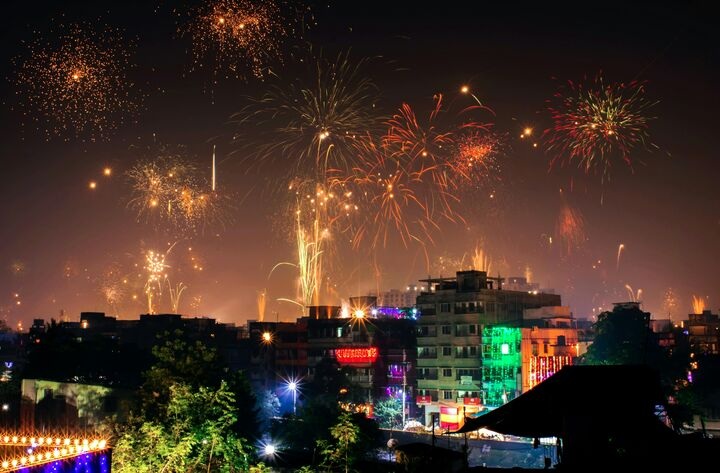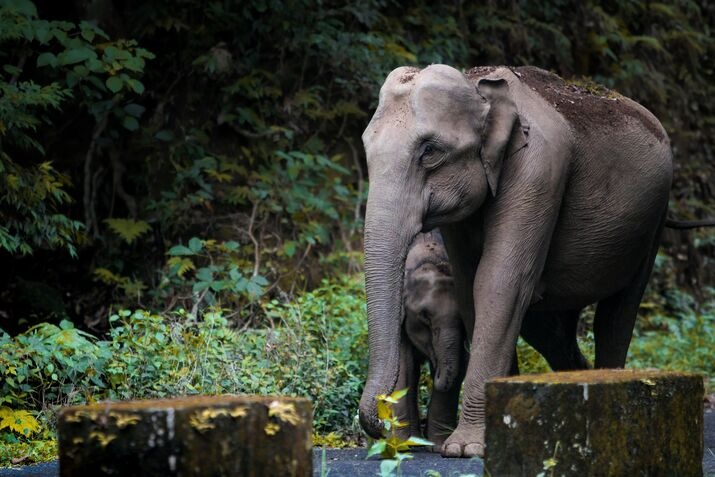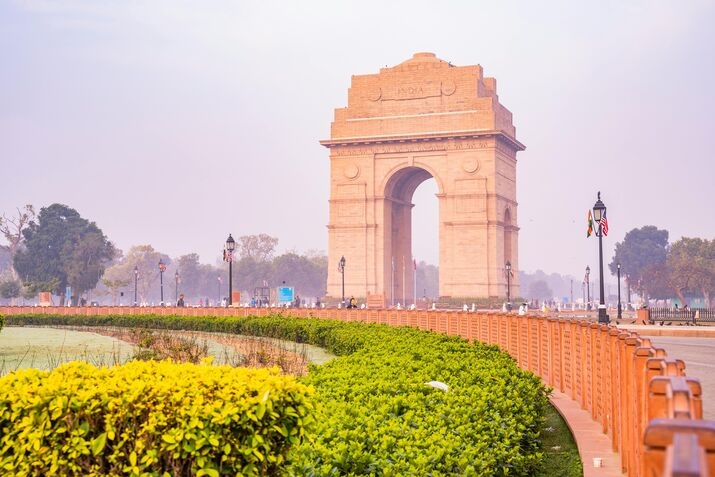Ever shown up in India during May, only to drown in sweat before reaching your hotel? Yeah, me too. Most travelers make that sticky mistake, but here’s the wild truth: winter in India isn’t just “less hot” — it’s absolutely magical. Winter is the best time to visit India.
Think 70-degree days in Rajasthan while you’re riding camels across desert dunes. Picture yourself wandering Kerala’s beaches without the monsoon crowds. When planning winter travel to India, you’re essentially getting VIP access to a completely different country.
The locals are more relaxed, the colors more vibrant, and those jaw-dropping Taj Mahal photos? No photobombing crowds or hazy summer skies.
But there’s one unexpected winter destination most travelers completely overlook, and it might just be the highlight of your entire trip…
Perfect Weather Conditions
A. Pleasant Temperatures Compared to Summer’s Scorching Heat
Ever tried sightseeing in India during summer? It’s like walking into an oven that someone forgot to turn off. Winter in India is a completely different story.
While summer temperatures regularly soar above 100°F (38°C) in many regions, winter brings delightful daytime temperatures between 59-77°F (15-25°C) in most tourist destinations. Northern cities like Delhi and Agra cool down significantly, making those long walks around the Taj Mahal actually enjoyable rather than a sweat-drenched endurance test.
B. Clear Skies for Better Sightseeing
Winter delivers those picture-perfect blue skies that make your photos pop. The monsoon clouds have cleared, the dust has settled, and visibility stretches for miles.
The Himalayan peaks emerge in crystal-clear glory during winter months. Places like Darjeeling and Shimla offer stunning mountain panoramas that remain hidden behind clouds most of the year. Even city monuments like Mumbai’s Gateway of India stand sharply defined against winter’s azure backdrop.
C. Less Humidity for More Comfortable Travel
The sticky, clingy humidity that defines much of India’s climate takes a vacation during winter.
Your clothes won’t stick to your back. Your camera lens won’t fog up every time you take it out. Your hair will actually behave. This drop in humidity means you’ll sleep better, explore longer, and generally enjoy yourself more. For travelers with respiratory issues, winter’s drier air provides welcome relief from the oppressive moisture that characterizes other seasons.
D. Ideal Conditions for Outdoor Activities
Winter opens up possibilities that summer heat makes unbearable:
- Desert safaris in Rajasthan become magical rather than punishing
- Beaches in Goa feel pleasant all day, not just at sunrise and sunset
- Hiking trails through tea plantations in Munnar become accessible without heat exhaustion
- Wildlife spotting improves as animals venture out more in comfortable temperatures
You can pack your days full without needing afternoon recovery naps. Morning to evening exploration becomes possible, effectively doubling your vacation time.
Fewer Crowds, Better Experiences

A. Popular Attractions Without the Long Lines
Ever stood in line for hours at the Taj Mahal, sweating profusely while trying to snap that perfect photo? Winter changes everything. Those famous spots that normally have you queuing for hours suddenly become accessible.
In December and January, you can walk right up to the Taj Mahal and actually enjoy the experience. The Red Fort in Delhi? Nearly empty. Jaipur’s Amber Fort? You’ll have breathing room to explore without someone’s selfie stick in your face.
I visited Varanasi in November and had front-row seats for the evening Ganga Aarti ceremony – something impossible during peak season without booking weeks ahead.
B. More Authentic Local Interactions
When tourist numbers drop, something magical happens – locals have time for real conversations.
Winter travel means chai stall owners might invite you to sit and chat rather than rushing to serve the next customer. Hotel staff share personal recommendations instead of rehearsed tourist routes. Street vendors tell you the story behind their crafts.
A shopkeeper in Jodhpur spent an hour showing me his family’s traditional textile techniques – something he admitted was “only possible in quiet season.”
C. Better Photography Opportunities
Winter light in India is a photographer’s dream. The softer sun creates perfect lighting conditions, especially during golden hour. But the real advantage? No crowds ruining your shots.
You can finally capture empty streets in Old Delhi or get that perfect reflection of the Lake Palace in Udaipur without fifty other tourists jostling for the same angle.
Morning fog adds drama to monuments and landscapes. The Ganges at sunrise, wrapped in mist? Utterly magical and completely uncrowded.
D. Lower Stress Travel Experience
Winter travel in India simply feels different. Train bookings that normally require planning weeks ahead become available last-minute. Hotels offer upgrades because they’re not at capacity. Restaurants have tables without reservation.
You can actually change plans mid-trip without everything falling apart. Decided you love Rishikesh and want to stay longer? No problem! The accommodation next door has vacancy.
This flexibility transforms India from potentially overwhelming to genuinely enjoyable. You’re experiencing the country on your terms, not according to some rigid itinerary forced by limited availability.
E. More Attention from Tour Guides and Hotel Staff
With fewer tourists competing for attention, service quality skyrockets. Guides who normally rush through explanations now take time answering questions and sharing deeper insights.
Hotel staff remember your name and preferences. The chef might ask about your meal preferences and customize dishes. Drivers suggest hidden gems they don’t have time to mention during busy season.
I stayed at a heritage hotel in Rajasthan where the owner personally took me on a tour of the property, sharing family stories and secret passageways – “something we only do in winter when we have time,” he explained.
Festival Season in Full Swing

A. Diwali: The Festival of Lights
Winter kicks off with India’s most dazzling celebration. Imagine streets lined with millions of clay lamps, homes decorated with colorful rangoli patterns, and the night sky exploding with fireworks. That’s Diwali for you.
The festival typically falls in October or November, marking the victory of light over darkness. It’s when families gather to feast on sweets, exchange gifts, and pray for prosperity. As a visitor, you’ll be welcomed into homes and community celebrations—Indians are famous for their hospitality during festivals.
Each region celebrates differently: in Varanasi, witness thousands of lamps floating down the Ganges; in Jaipur, markets glitter with fairy lights and the entire Pink City seems to shimmer.
B. Pushkar Camel Fair: A Cultural Spectacle
Nothing prepares you for the sight of 30,000 camels gathered on desert sands. This November fair in Rajasthan transforms a sleepy town into a vibrant cultural hub.
Beyond the camel trading, you’ll find mustache competitions, bridal contests, and spiritual rituals around Pushkar’s sacred lake. The fair grounds become a riot of color with folk performances, ferris wheels, and markets selling everything from camel decorations to silver jewelry.
For photographers, the golden light at dawn illuminating camels against desert dunes creates magic. The fair coincides with the full moon, when pilgrims take ritual dips in the holy lake.
C. Christmas and New Year Celebrations with an Indian Twist
Goa during December is where East meets West in the most delightful way. Palm trees wrapped in twinkling lights, midnight mass in 400-year-old Portuguese churches, and beach parties that last till sunrise.
In hill stations like Shimla and Manali, you might even catch snowfall for that perfect white Christmas. Major cities like Mumbai and Delhi transform with elaborate decorations in markets and malls.
New Year’s Eve in India offers choices for every traveler—from peaceful retreats in Kerala’s backwaters to glamorous parties in metropolitan hotels to bonfires under starlit desert skies in Rajasthan.
D. Lohri and Pongal: Celebrating the Harvest
January brings regional harvest festivals that showcase India’s diversity. In North India, Lohri celebrations center around massive bonfires where people toss popcorn, peanuts, and sweets while dancing to folk tunes. The crackling flames against the winter night create a mesmerizing atmosphere.
Head south, and Pongal transforms Tamil Nadu into a four-day celebration. Watch as families draw elaborate kolam patterns outside homes, cook sweet rice in new clay pots until they overflow (symbolizing abundance), and decorate cattle with flowers and bells in thanksgiving for a successful harvest.
These authentic cultural experiences let you connect with rural India’s heartbeat—something most summer tourists completely miss.
Wildlife Viewing at Its Best

A. Tiger Sightings More Common in National Parks
Winter in India isn’t just about cozy sweaters and hot chai—it’s prime tiger-spotting season. As temperatures drop, these majestic cats spend more time in open areas, soaking up the sun. Ranthambore, Bandhavgarh, and Kanha national parks report up to 30% more tiger sightings between November and February.
Why? Simple. The cooler weather makes tigers more active during daylight hours. Plus, the thinning vegetation and dried undergrowth make these striped beauties easier to spot against the winter landscape.
B. Bird Migration Season Across Wetlands
Ever seen thousands of flamingos painting a wetland pink? Winter transforms India into a bird-watcher’s paradise. Bharatpur’s Keoladeo National Park hosts over 230 species of migratory birds, while the Sundarbans welcome rare kingfishers and storks.
The wetlands of Kutch in Gujarat become a flamingo hotspot, with numbers sometimes reaching 100,000! Grab your binoculars—you won’t need a zoom lens for these spectacular gatherings.
C. Elephant Bathing Rituals in Kerala
Winter mornings in Kerala offer a special treat—elephants enjoying their morning bath in rivers and lakes. In places like Kodanad and Guruvayur, you can watch these gentle giants being scrubbed and pampered by their mahouts.
The cooler temperatures make the elephants more playful, often spraying water and trumpeting joyfully. It’s pure, unfiltered elephant happiness, and honestly, it’s impossible not to smile watching them.
For an experiential tour of wildlife in Kerala visit Kerala in 8 days.
D. Clear Visibility in Wildlife Sanctuaries
Summer haze? Gone. Monsoon fog? History. Winter brings crystal-clear visibility to India’s wildlife sanctuaries. The dry air means your safari photos will pop with detail and color.
The Gir Forest’s Asiatic lions are easier to track, while Kaziranga’s one-horned rhinos often graze in open meadows. Even the elusive snow leopards in Hemis National Park leave more visible tracks in the light snow.
Trust me—I’ve done wildlife photography in India across seasons, and winter shots always turn out best. The light is softer, the backgrounds clearer, and the animals more active.
For a blog on culture shocks you might face in India, visit Great Holiday Ideas.
Incredible Value for Money

Incredible Value for Money
Winter in India isn’t just about perfect weather and fewer tourists – it’s also when your rupees stretch further than you ever imagined. Your wallet will thank you for visiting during these cooler months.
A. Off-Season Discounts on Accommodations
Hotel prices drop dramatically once peak season ends. I’m talking 30-50% reductions at the same places that charge premium rates during summer and spring. That boutique hotel in Jaipur that normally costs ₹8,000 per night? Now it’s yours for ₹4,000. Even five-star properties slash their rates to attract visitors during winter months.
B. Flight Deals During Non-Peak Months
Airlines practically beg for your business during winter. Domestic flights between major cities often drop to half their usual prices. International flights to India from December through February can be 30% cheaper than during summer months. Plus, you’re more likely to score that empty middle seat – winter flights rarely operate at full capacity.
C. Negotiable Rates for Tours and Activities
Tour guides and activity operators get hungry for business in winter. That means serious bargaining power for you. Private guides who won’t budge on price during peak season suddenly become flexible. That Rajasthan desert camel safari? The price is suddenly “just for you, special price.” And they actually mean it.
D. Special Winter Packages at Luxury Resorts
Luxury properties roll out the red carpet with winter-special packages. Many include complimentary spa treatments, free airport transfers, or extra nights. Places like Goa and Kerala offer beach-and-wellness combos at prices that would be laughable during high season.
E. More Affordable Shopping at Local Markets
Winter shopping in India is next-level bargain hunting. Sellers at local markets are more willing to negotiate during slower months. Those gorgeous pashmina shawls? Perfect for winter and priced better too. Handicrafts, textiles, and souvenirs all come with friendlier price tags when there’s less competition from other tourists opening their wallets.
The winter months transform India into a traveler’s paradise with comfortable temperatures replacing the scorching summer heat. From November to February, you can explore India’s diverse landscapes and bustling cities without battling overwhelming crowds, allowing for more authentic interactions and easier access to popular attractions. This season also brings vibrant celebrations like Diwali, Christmas, and Pongal, offering cultural experiences impossible to find during other times of the year.
Wildlife enthusiasts will find winter particularly rewarding as animals become more active and visible in national parks. Tigers, elephants, and exotic birds are easier to spot against the drier vegetation. Add to this the significant cost savings on accommodations, activities, and even shopping during the off-peak season makes winter as the best time to visit India.
For immersive culture walks in India visit 5 Senses Walks.
Discover more from Great Holiday Ideas
Subscribe to get the latest posts sent to your email.